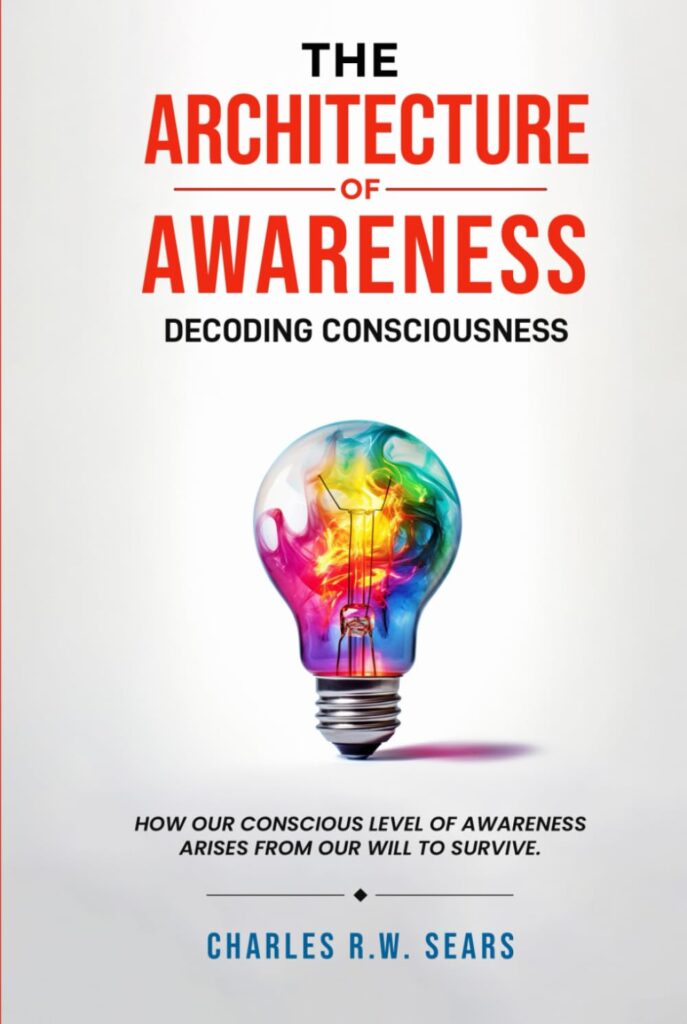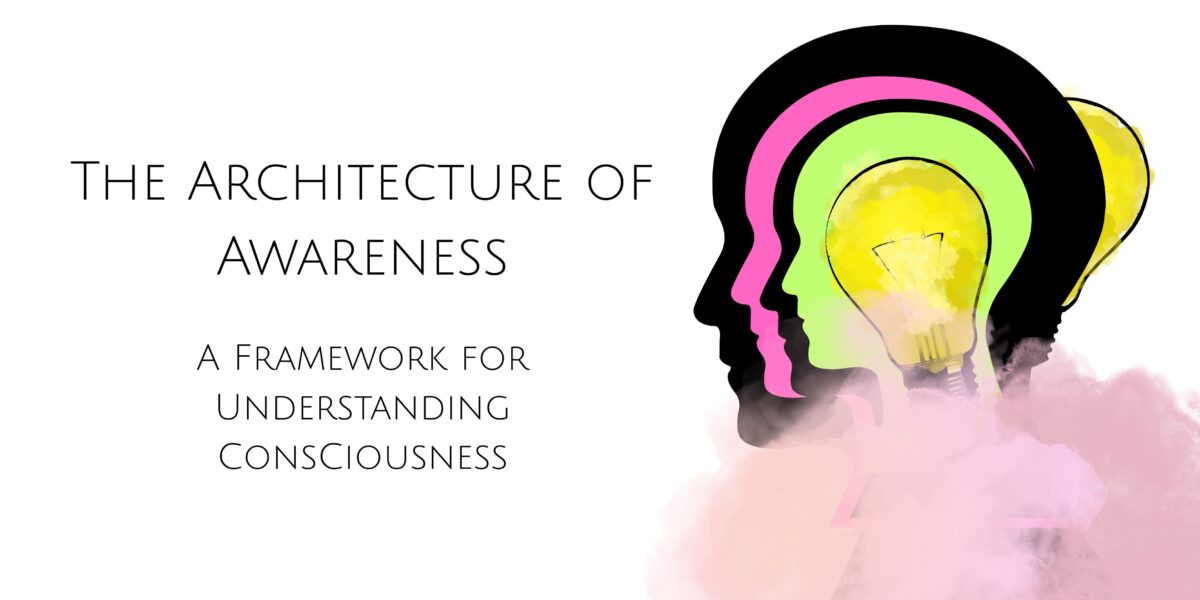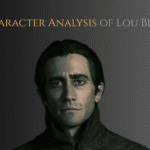For decades, the “hard problem” of consciousness has remained a mystery. Psychology and cognitive science have progressed, but the mechanics of consciousness still seem to elude us. After all, it is not easy to answer how physical matter could give rise to subjective experience.
In The Architecture of Awareness: Decoding Consciousness, Charles R.W. Sears argues that the mystery of consciousness lies in how we frame it. Scientists would hope to view consciousness as a discrete variable; that there is a clear measurable point where it begins and ends.

However, as Sears would put it, viewing consciousness as an emergent system architecture is probably much more useful. “Being” could be understood as a product of a system that cyclically models itself and the world, based on assigning semantic weight to incoming sensory information based on survival relevance.
The Unifying Theory of Emergent Consciousness is not just speculative mysticism. Rather, it entails a modeling process as a product of natural accumulation of value in an ever-observing and learning system. We are that system, interpreting our own significance within a layered, feedback-driven reality.
From Cognitive Framework to Felt Experience
In the early chapters, Sears introduces the Cognitive Framework. He uses it to outline how organisms create internal models of reality for navigation. These models basically evolve through experience, prediction, feedback, and how relevant things are for survival. First, meaning is assigned to sensory input. Following this, value maps are created, telling the organism what matters, what to avoid and what to seek.
However, are we just accumulation of data?
Sears answers this question through the principle of recursiveness. He argues that consciousness arises when the system begins modeling itself as an agent in its world. This is the basis by which consciousness actively evaluates itself based on identity, memory, and social context.
In this recursive modeling structure, inputs take on semantic weight. In other words, they are based on feeling, building on experience and emotional resonance. That is the essence of subjective experience.
The Birth of “I”: Recursive Self-Modeling
Sears explains the “I” through the concept of Stratum — the layered construction of identity through recursive loops. Basically, the cyclical nature of the system modelling and remodeling itself meaningfully creates a narrative. This is not just memory. This is a psychological alignment between self and world-models. It is reflexive awareness.
One example in Chapter 5 describes a person reacting emotionally to a harmless comment.
The reaction wasn’t to the words alone.
It was more to a deeper structure. The reaction had elements of internalized beliefs about self-worth along with past experiences of being excluded. Moreover, there were assumptions about social standing that guided it. These elements are a product of value systems built over time.
They create emotionally charged interpretations that feel real.
This recursive framework creates a unique perspective. This is the difference between being a passive receiver and responder – much like most language-learning models – and a reflective agent. Hence, subjective feeling can be seen as an inevitable result of recursive structure along with accumulated semantic relevance.
Redefining Qualia as Felt Significance
Qualia is the “raw feel” of experience. Traditional philosophy considers qualia as something which cannot be fully explained. However, Sears would argue that qualia are best understood as felt significance. According to him, it is the internal resonance of semantically weighted input, modeled through a self-aware system.
In Chapter 7 of the book, a peculiar story of a man is described. This person believes his height (5’5”) limits him socially. However, the decades of incidents that reinforce this narrative is redirected by a new observation he makes. Basically, he learns that elite fighter pilots and special forces operators also tend to have similar heights.
This new frame reweighs his input.
Suddenly, the man feels differently about his height.
The world hasn’t changed.
The value map has.
Thus, it can be understood that qualia are dynamic. Rather than static properties of stimuli, they are the recursive result of what something means to the system that feels it. So, this new way of thinking about qualia puts the concept within the architecture of awareness. Hence, qualia are not as mystical as philosophers once put them.
Solving the Hard Problem by Reframing It
Chapter 9, which most directly focused on the hard problem, Sears argues that the issue does not lie in explaining feeling. Rather, the problem is in expecting it to arise without being informed by recursion or having a semantic structure. Simply put, a system that only processes data can never feel. However, if the system is aware of itself as an agent in its models and it assigns value to elements based on its perceived utility to survival, this can lead to internal resonance. So, feeling becomes a necessary byproduct.
The full logic goes something like this:
- Recursive modeling enables self-reference.
- Semantic weighting assigns emotional and survival value to inputs.
- When these processes loop through time and behavior, a persistent narrative identity forms.
- This identity is felt from the inside.
Subjectivity, based on this logic, does not seem to be an oddity of physical matter. Rather, subjectivity the experience of a system modeling meaning about itself, the people around it and the world, across recursive layers. This places the inevitable emergence of consciousness as simply a system property. No longer does it have to be considered as a metaphysical leap.
A Framework Consistent with Psychological Science
While the theory is original, it works within accepted models of psychology. For one, it operates in the domain of predictive processing. This theory describes how brains forecast input and adjust expectations. On the other hand, the framework is consistent with constructivist psychology, which shows how belief and perception are co-created through narrative. Moreover, paradigms of psychotherapy as well affirm that emotional experience is shaped by subjective interpretation and long-held beliefs and perceptions.
Thus, the unifying theory of consciousness is psychologically relevant and theoretically testable.
Consciousness Is Not a Mystery — It’s a Mirror
Consciousness has always seemed like a riddle. We expect it to be more (and less) than what it is. Charles Sears’ assertion in his book The Architecture of Awareness is that a system built to survive, which organizes its experiences through layered meaning, and models itself doing so, inevitably reaches the threshold of feeling like something.
That feeling is not mysterious. It is not inexplicable.
It is the mirror the system builds to see itself — and to care about what it sees. Understand this, and we can begin to demystify consciousness.
I am a Clinical Psychologist and a Lecturer of Psychology at Government College, Renala Khurd. Currently, I teach undergraduate students in the morning and practice psychotherapy later in the day. On the side, I conjointly run Psychologus and write regularly on topics related to psychology, business and philosophy. I enjoy practicing and provide consultation for mental disorders, organizational problems, social issues and marketing strategies.





